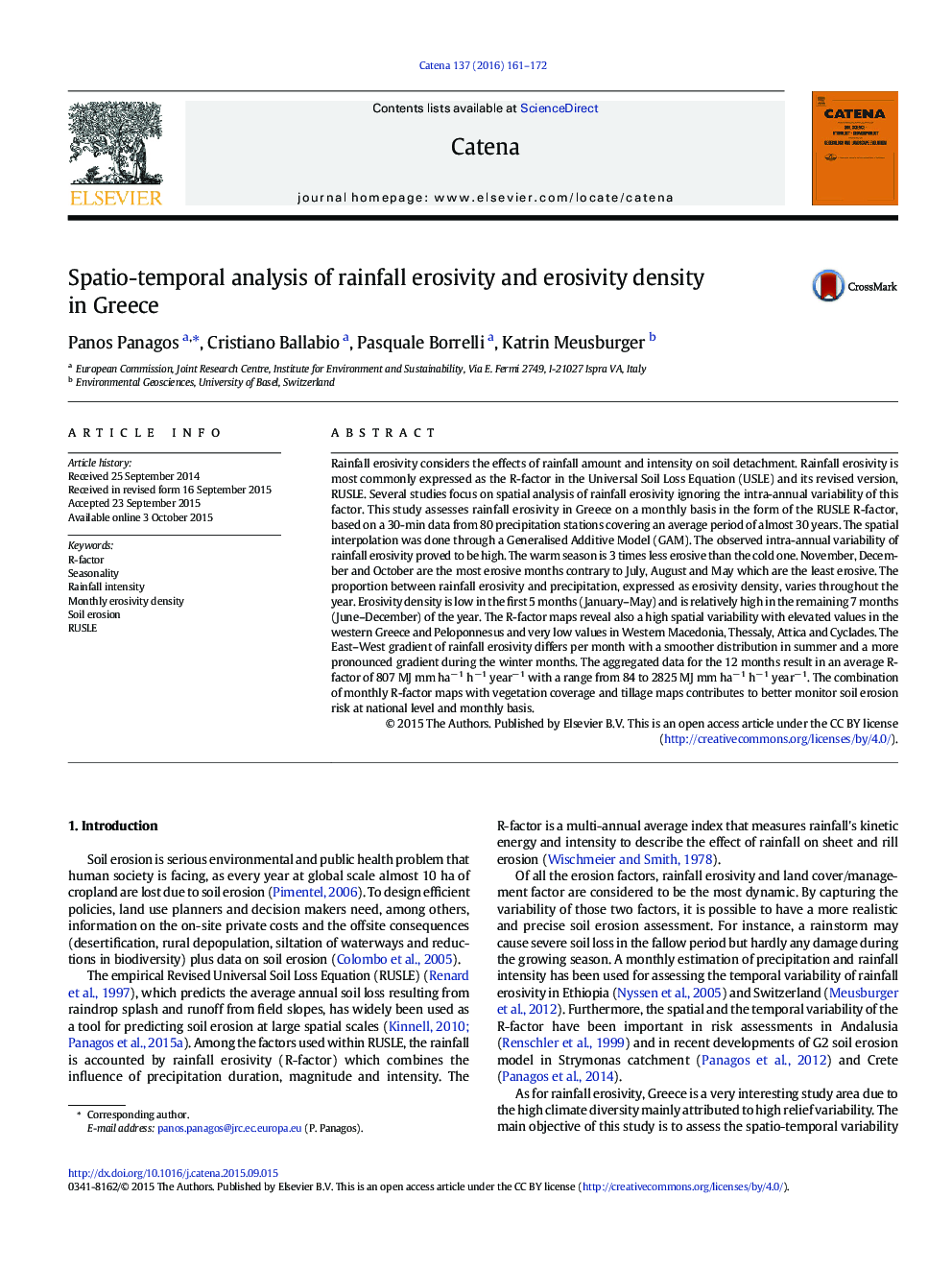| کد مقاله | کد نشریه | سال انتشار | مقاله انگلیسی | نسخه تمام متن |
|---|---|---|---|---|
| 6407950 | 1629215 | 2016 | 12 صفحه PDF | دانلود رایگان |
- Rainfall erosivity in Greece is estimated to 807 MJ mm haâ 1 hâ 1 yearâ 1.
- Cold season is three times more erosive than the warm one.
- Spatial analysis shows a gradient of high R-factor in Western Greece & Peloponnesus.
- R-factor has a high intra-annual variability with the highest value in November and lowest in July.
- Monthly erosivity density (ratio of R-factor to precipitation) identifies months with rainstorms.
Rainfall erosivity considers the effects of rainfall amount and intensity on soil detachment. Rainfall erosivity is most commonly expressed as the R-factor in the Universal Soil Loss Equation (USLE) and its revised version, RUSLE. Several studies focus on spatial analysis of rainfall erosivity ignoring the intra-annual variability of this factor. This study assesses rainfall erosivity in Greece on a monthly basis in the form of the RUSLE R-factor, based on a 30-min data from 80 precipitation stations covering an average period of almost 30 years. The spatial interpolation was done through a Generalised Additive Model (GAM). The observed intra-annual variability of rainfall erosivity proved to be high. The warm season is 3 times less erosive than the cold one. November, December and October are the most erosive months contrary to July, August and May which are the least erosive. The proportion between rainfall erosivity and precipitation, expressed as erosivity density, varies throughout the year. Erosivity density is low in the first 5 months (January-May) and is relatively high in the remaining 7 months (June-December) of the year. The R-factor maps reveal also a high spatial variability with elevated values in the western Greece and Peloponnesus and very low values in Western Macedonia, Thessaly, Attica and Cyclades. The East-West gradient of rainfall erosivity differs per month with a smoother distribution in summer and a more pronounced gradient during the winter months. The aggregated data for the 12 months result in an average R-factor of 807 MJ mm haâ 1 hâ 1 yearâ 1 with a range from 84 to 2825 MJ mm haâ 1 hâ 1 yearâ 1. The combination of monthly R-factor maps with vegetation coverage and tillage maps contributes to better monitor soil erosion risk at national level and monthly basis.
Journal: CATENA - Volume 137, February 2016, Pages 161-172
